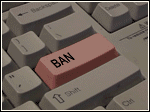I’m pretty new to PETG, and have been really struggling with it compared to PLA. My latest print of this part is dimensionally accurate, but I need it to be air tight. It is very much not at the moment.
I have a Flashforge Adventurer 3, so the hot end and nozzle are one interchangeable unit. My higher temp nozzle is 0.6mm. My 0.3mm is only capable of 240. My last print was 0.2mm layers, with the 0.6mm nozzle at 245C. I used 15% overlap on my walls, and in order to keep my nice dimensions I had my cooling fan on.
Anybody have any advice on how to improve the seal? I’m tempted to try more overlap, with random start locations per layer. Do you think if I run it hotter I can get the layers a little thinner? Any advice would be appreciated.
Around a year ago Stephan from CNC Kitchen on YT did a bunch of scientific tests to show how to best bond layers and attempt to print without inclusions. Maybe check that out. It requires higher temps and super dialed in squish. Printing perfect PETG requires double the amount of tuning and effort as PLA. It also sucks up moisture to the extreme. Like you can print fine with kinda wet PETG, it will make lots of zits, stringing, and terrible seams. If you want it perfect, the stuff has to be dried to the extreme and printed from a drybox. I hate PETG. I’d rather print any other filament if I can. If I really need to use it, I dry it, but I also manually place every single seam on the inside of my part and in the middle of any back walls. Almost all issues with PETG will occur due to or around seams. If you can hide all of these, the outside of the part can look nice. Like I’ll go into my design and add a tiny chamfered groove in the outer surface if I have no choice and must have an external seam. Just forcing the extrusion anchor inside the part by a few millimeters can help mitigate the issues. All the problems are due to moisture expanding and causing ooze combined with PETG being extremely sticky when molten.
My issues are definitely around the seams. I thought randomize go the starting points on my layers would help, but it just made the whole part leaky instead of having it localized. I’ll definitely check out that video, thank you!
I agree. Especially on slowing down the speed.
A few other things to consider:
- Backing off the extruder a smidge can help.
- There’s so much variation in PETG filament between brands that I would do a temp tower, just to be sure. I’ve had “PETG” that worked best @ 235C and 260C.
- Play with retraction. It looks like that printer has a Bowden setup, so the range of length can vary a bit, but I’ve had success turning retraction off, as well as setting it to 6.5mm. It kinda depends on the geometry and filament heat retention.
- I try to avoid getting near the printed part during travel - there’s always some little hair that catches the nozzle as it flies by.
And like others said, coat it with something to fill in the tiny pores. I generally have some thin epoxy lying around for stuff like table tops. You can basically use anything as a colorant in it. It very slightly yellows with UV exposure, but the worst I’ve seen the decent stuff get is similar to a very slightly warm white from an incandescent bulb. A tiny touch of blue should make it weather nicely.
This probably isn’t what you want to hear, but if I need something watertight, I use a material that can be smoothed during post-processing using a vapour bath (I prefer PVB, but ABS or HIPS should also work). Smoothing the print effectively causes it to self-coat. PETG may simply not be the best choice for your application.
Yeah, it is not a super friendly material. I really wanted this piece to be at least translucent, as it would save having a separate piece for an ink window, and it is just cool to see the ink in the feed. Looks like there is a clear PLA on sale on Monoprice right now, I just went ahead and ordered some. I have my PLA settings dialed in pretty well, I can probably get it down with that. I’m still going to keep trying with the PETG, though.
PLA is not one of the filaments that can be vapour smoothed with household chemicals afaik. I don’t think you’ll have more success with than the PETG. Sounds like PVB might be more suitable for your project, since it’s transparent and can be smoothed with IPA.
Technically, any filament can be smoothed if you’re willing to use sufficiently noxious chemicals. Ethyl acetate is apparently the least noxious smoother for PLA—it’s used in perfumes and can be purchased off Amazon, Ebay, and other large marketplaces. Not something you’d have lying around, but I don’t think it’s terribly toxic, either (never tried it myself). Still, check some MSDSs or the like before you shoot off and buy some.
Well, that’s why I wrote household chemicals :) TIL about ethyl acetate though, I’ve always heard chloroform being the best solvent for PLA.
Well, I only claimed that ethyl acetate was the least noxious, not the most effective—Wikipedia claims a low overall toxicity, and use in skin contact and even food applications. Chloroform seems like it would be slightly higher-risk. 😉
Are you printing your own fountain pen grip sections? That’s wild.
I haven’t found a reason to get into 3D printing… but I do love fountain pens.
Have you joined the fountain pen community yet? We’re pretty content starved.
Not yet. Is it on lemmy.world? Can you link it?
I haven’t really done links on Lemmy yet… can I just paste it? Let’s see!
Edit: No, you do not just paste them. Hopefully that’s better!
Hi there! Looks like you linked to a Lemmy community using an URL instead of its name, which doesn’t work well for people on different instances. Try fixing it like this: [email protected]
Trying to! The ultimate goal is a full pen. I’m thinking eyedropper filled, then lever filler.
That’s badass. Please post updates on your project. I will follow your career with great interest.
It’s hard enough to successfully print something that holds water properly. If it’s at all possible, the best way to handle it is coating the print with something to seal it afterwards. If it’s not, making something airtight would require having quite a few walls and especially surface layers to make sure all small gaps eventually get blocked off.
I have had 100% success sealing PLA prints used as plant pots (I know OP is asking about PETG, should still work) with a can of rustoleum spray lacquer, much easier than trying to dial in settings.
I have some clear rustoleum lacquer in my garage, I’ll have to give that a try in addition to some of these other tips
If i want quick and easy watertight i’ll coat it in a paint sealer (or similiar) from the craft store. I have yet to manage printing a watertight print right on the bed.
More perimeters and smaller layer height?
Yeah, I will definitely try smaller layer height. The wall thickness is only about 4 or 5 perimeters wide at the thickest point, though. So, I can’t really increase that I’m afraid.
Unless I have the perimeters overlap enough to squeeze an extra one in, that could be worth a shot
100% agree with adding a coating agent after printing, but if you’re looking to minimize small holes and fissures, consistent line width is super important. High speeds can make thinner lines than when it slows down at starts/stops and corners.
Printing PETG slower than PLA is already a common recommendation, but unless your printer supports input shaping and linear (or pressure) advance, I’d go as slow as you can bear. As a perk, if 245 is the optimal temp for your usual speed, going slower will make 240 work better.
I’m not sure what my optimal temp is yet, I’ve been using 245 because it was the middle of the range recommended by my filament. I will definitely try slower, I had already slowed to 50% my PLA speed. I’ll try like 30% though!
Removed by mod








